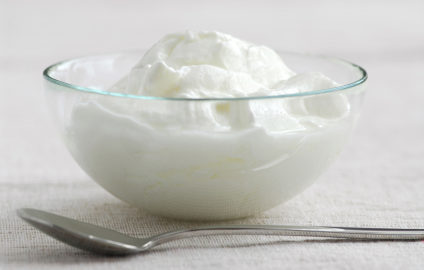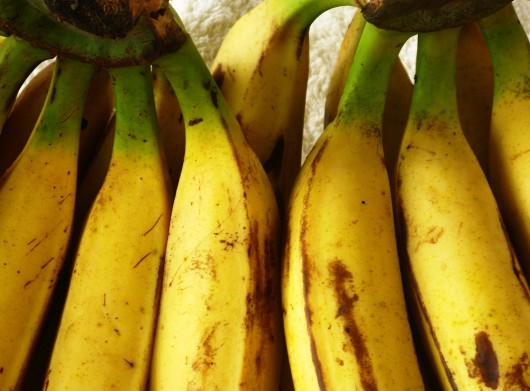Superfood: Low fat or Fat-free Yogurt? Really?

With the many health and fitness trends circulating these days, it’s easy for most of us to become overwhelmed. If you’ve been struggling to sort through the minefield of diet and exercise fads, one of the easiest and steadfast rules to apply to your daily life is this—eat less, eat clean and move more. “Cleaning” your diet refers to eliminating over processed, over salted, high fat foods and focusing more on including whole, natural foods that are not devoid of their nutrients due to the processing phase. One of the simplest and most enjoyable selections is probably already in your fridge—low fat or fat-free yogurt.
Even an Ordinary Yogurt has History

Discovery of yogurt was a very happy accident, the result of storing milk products in warmer climates and using rather primitive methods dating as far back as the Neolithic societies of Central Asia.
It’s widely known that the discovery of yogurt was a very happy accident, the result of storing milk products in warmer climates and using rather primitive methods dating as far back as the Neolithic societies of Central Asia. This particular group of people was known as herdsmen who used animal stomachs to carry the milk product from their livestock. Such methods of transportation encouraged a curdling of the milk, thus resulting in a very early form of yogurt. The process of fermenting dairy products of course evolved throughout the centuries with each society progressing the practice of creating various types of this beloved treat. In the twentieth century, Isaac Carasso of Barcelona was the first known individual to industrialize the manufacturing and production of commercial yogurt. You might be familiar with the modern day company Danone. Back in 1919, Carasso’s yogurt brand was called “Danone”, named for his son Daniel and today is recognized across the globe as one of the most familiar yogurt brands available.
Superfood
Long considered a power-packed food, the good bacteria cultures of low fat and non-fat yogurt serve as a boost to your immune system. These amazing little cultures work to stimulate your own white cells that serve to help ward off many common viruses and infections. For those of us watching our weight, yogurt, particularly Greek yogurt, contains an excellent source of protein. Adding a few extra grams of protein to your diet helps aids in the creation and preservation of lean muscle mass as well as keeping those pesky mid-afternoon snacking urges at bay.
Health Benefits

Yogurt carries high amounts of probiotics, the live bacteria cultures known for improving intestinal health and reducing the chances of developing many forms of colon disease.
Many people shy away from yogurt due to an inability to digest lactose, however this amazing superfood can actually aid such aliments due to it’s high levels of lactase, the enzyme needed to breakdown lactose in the body. Yogurt carries high amounts of probiotics, the live bacteria cultures known for improving intestinal health and reducing the chances of developing many forms of colon disease. Women can specifically benefit from adding a cup or two of yogurt to their food intake. The live-active cultures found in yogurt are known to effectively decrease the risk of developing yeast infections as well as adding some much needed calcium to the diet.
Best Way to Enjoy
Yogurt is an incredibly diverse food and can be folded into a wide array of recipes including curries, traditional Greek dishes, grilling sauces and marinades. However, sometimes simple is best. The quickest way to enjoy this lively little food is to scoop out a cup of non-fat or low-fat yogurt, preferably non-sweetened, and add a teaspoon of delicious low-glycemic Agave nectar. Throw on a few blueberries for antioxidents and you have a protein-packed snack. For a complete breakfast, pair a half of a cup of yogurt and your teaspoon of Agave nectar as a side to a cup of steel-cut organic oats.
A quick note, those little containers you may have plucked from the grocers can be sneaky. Most commercially available yogurts contain high amounts of processed sugars, meaning that they have refined sugars added to the natural amount of sugar found in dairy products. While the notion of fruit swirled into your yogurt is appealing, it can also mean adding many additional calories to your daily limit. Be smart and always opt for yogurt without artificial flavorings. This is your chance to be creative, add your own fresh fruit or natural, plant-based sweeter to liven up this amazing superfood.
Here is a video how to make a quick snack from Greek Yogurt. If you want to make it healthier skip sugar and use oats for cereal. Enjoy!
